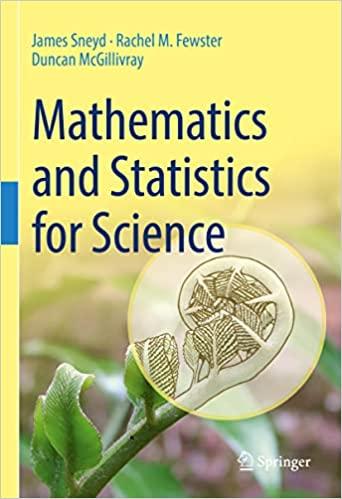An absent-minded professor owns one umbrella. Each morning he walks from home to work, and each evening
Question:
An absent-minded professor owns one umbrella. Each morning he walks from home to work, and each evening he walks from work back home again. He only ever thinks to take the umbrella with him if it’s raining. Otherwise the umbrella stays where he last left it, whether that was at home or work. If the umbrella isn’t available in the right place when he needs it, unfortunately he has no choice but to get wet.
Suppose it rains with probability p on any individual trip, independently of all other trips. The professor knows his umbrella process gives the following long-term probability that the umbrella is available on any given trip:
P(umbrella is available) = 1 2 − p .
Here, a "trip" means either a walk from home to work, or a walk from work to home.
a. Let X be a random variable giving the number of umbrellas the professor has available on any trip. Thus, X takes only two values, 0 or 1. Translate the information above into a probability statement for X, and hence write down the probability function of X in table format.
b. What is the probability that the professor gets wet on any given trip over the long term? Find the answer in terms of p, and calculate its value when the probability of rain is 0.2.
c. The professor realises that he can operate his scheme with two umbrellas, and he’ll have less chance of getting wet.
Let Y be the random variable that specifies the number of umbrellas the professor now has available on any trip. Thus Y can take the values 0, 1, or 2. The professor calculates How does he do all these calculations? He uses something called Markov chain theory. It’s really nifty.
that P(Y = 1) = P(Y = 2) = 1 3 − p .
Write down the probability function of Y in table format.
You can probably make a guess what the formula will be for n umbrellas. Even if he has 10 umbrellas, the professor still gets wet on about 1.5% of his trips.
d. What is the probability that the professor gets wet on any given trip now that he has two umbrellas? Again find the answer in terms of p, and calculate its value when p = 0.2.
Step by Step Answer:

Mathematics And Statistics For Science
ISBN: 9783031053177
1st Edition
Authors: James Sneyd, Rachel M. Fewster, Duncan McGillivray






